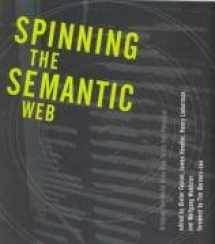
Spinning the Semantic Web: Bringing the World Wide Web to Its Full Potential
ISBN-13:
9780262062329
ISBN-10:
0262062321
Author:
Dieter Fensel, James Hendler, Wolfgang Wahlster, Henry Lieberman
Publication date:
2002
Publisher:
Mit Pr
Format:
Hardcover
392 pages
FREE US shipping
Book details
ISBN-13:
9780262062329
ISBN-10:
0262062321
Author:
Dieter Fensel, James Hendler, Wolfgang Wahlster, Henry Lieberman
Publication date:
2002
Publisher:
Mit Pr
Format:
Hardcover
392 pages
Summary
Spinning the Semantic Web: Bringing the World Wide Web to Its Full Potential (ISBN-13: 9780262062329 and ISBN-10: 0262062321), written by authors
Dieter Fensel, James Hendler, Wolfgang Wahlster, Henry Lieberman, was published by Mit Pr in 2002.
With an overall rating of 3.5 stars, it's a notable title among other
books. You can easily purchase or rent Spinning the Semantic Web: Bringing the World Wide Web to Its Full Potential (Hardcover) from BooksRun,
along with many other new and used
books
and textbooks.
And, if you're looking to sell your copy, our current buyback offer is $0.3.
Description
As the World Wide Web continues to expand, it becomes increasingly difficult for users to obtain information efficiently. Because most search engines read format languages such as HTML or SGML, search results reflect formatting tags more than actual page content, which is expressed in natural language. Spinning the Semantic Web describes an exciting new type of hierarchy and standardization that will replace the current "web of links" with a "web of meaning." Using a flexible set of languages and tools, the Semantic Web will make all available information -- display elements, metadata, services, images, and especially content -- accessible. The result will be an immense repository of information accessible for a wide range of new applications.This first handbook for the Semantic Web covers, among other topics, software agents that can negotiate and collect information, markup languages that can tag many more types of information in a document, and knowledge systems that enable machines to read Web pages and determine their reliability. The truly interdisciplinary Semantic Web combines aspects of artificial intelligence, markup languages, natural language processing, information retrieval, knowledge representation, intelligent agents, and databases.


We would LOVE it if you could help us and other readers by reviewing the book
Book review

Congratulations! We have received your book review.
{user}
{createdAt}
by {truncated_author}


